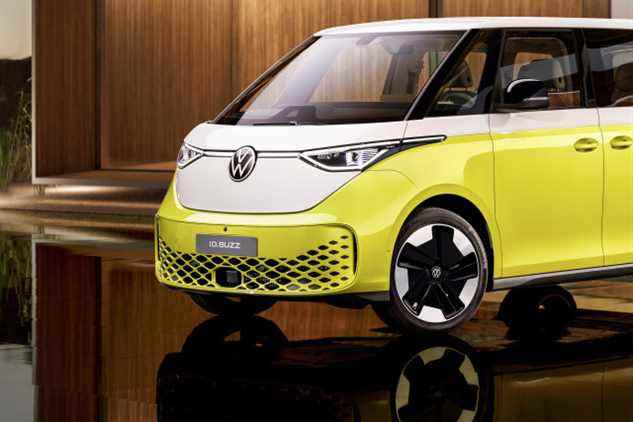Posted at 5:45 p.m.
It was January 2001. The automotive world was living to the rhythm of a neo-retro wave following the launch of the New Beetle three years earlier. Attempting to appropriate a slightly larger share of this trend which has revived the Mini Cooper and Ford Thunderbird, among others, Volkswagen arrives at the Detroit Motor Show with the Microbus, a reissued version of its legendary model inseparable from the counter-culture. hippie. The initiative, while laudable, will have created nothing tangible other than more styling studies to adorn subsequent car show booths. Twenty-one years later, the revival of the Bus is officially set in motion, by electric impulse. Here is the ID.Buzz.
The German manufacturer lifted the veil last week on the long-awaited model in its final form. The fully electric van, largely inspired by a design study unveiled five years ago, precisely in Detroit, undeniably tries to capture the aura of the original Bus in order to encourage the electric transition. Its design – unique and endearing – featuring a flat muzzle and very short overhangs goes back to basics with a touch of modernity. Like the ancestor, the headlights and taillights are placed below the upper line of the beltline. They are obviously with diodes, modernity obliges.

PHOTO PROVIDED BY VOLKSWAGEN
The dashboard of the Volkswagen ID.Buzz
The simple and generally cubic lines of the body combine with the MEB electric modular platform which concentrates the components quite low. This increases the living space. Thus, this European version with short wheelbase has a rear cargo space of 1121 L while spreading out a footprint similar to that of a compact SUV. Note that the North American livery will have a longer wheelbase to add an additional bench seat. Impossible to know if the cargo version presented last week will cross the Atlantic for the moment. Volkswagen has also ignored the use of leather and the fabrics used are made from recycled materials.

PHOTO MARTIN MEINERS, SUPPLIED BY VOLKSWAGEN
The interior of the Volkswagen ID.Buzz
Petrol makes way for electric
Long driven by roaring flat four-cylinders, the Bus encouraged the contemplation of landscapes, especially when the hills were steep. For his descendant, energy is no longer produced by fuel, but electrically. The present European livery essentially embeds the ID.4 power unit.

PHOTO PROVIDED BY VOLKSWAGEN
This short wheelbase European version has a rear cargo space of 1121 L while spreading out a footprint similar to that of a compact SUV.
Thus, for the moment, a single electric motor is bolted to the rear axle. It produces 201 hp and runs off an 82 kWh battery. The latter is compatible with a charging power of 170 kW and can restore energy to your home thanks to a compatible terminal. Volkswagen Canada could not advance on the technical specifications of the Canadian variant, but it would not be surprising if this is the entry proposal.
For those interested, it will obviously be necessary to be patient. The pre-order pad will open for Canada next year to prepare for release in 2024. Until then, we’ll have a fuller picture of the roomier North American livery.

